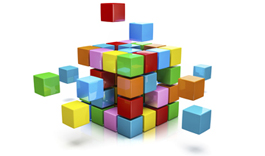Towards a European Interoperability Architecture

2016.32 European Interoperability Architecture (EIA)
You work in a public administration. A cross-border public service is about to be developed. You would like to keep costs down and reuse solutions that have already been developed. The EIA should facilitate interoperability and reuse when developing public services.
What is this action about?
Improving cross-border cooperation between Member States’ public administrations requires cross-border compatibility of the various services and data registers in use.
This action develops together with the Member States and the relevant European Commission departments a joint vision for an Interoperability Architecture for European public services. This involves outlining its scope, deciding how the architectural building blocks will fit together, and determining the need for interface standards between such building blocks.
The action will also assess the need for and relevance of having common infrastructure services as part of this architecture.
Analysis during the first phase of the European Interoperability Strategy (EIS) found that, at conceptual level, architecture guidelines were missing or inadequate, in particular:
- there are no architectural guidelines for cross-border interoperability of building blocks;
- concrete, reusable interoperability guidelines and rules and principles on standards and architecture are lacking;
- there are no specifications on how to develop information exchange between ICT systems;
- implementation guidelines are inadequate.
Similar shortcomings were found at operational level, not least the lack of common infrastructures (i.e. an Interoperability Platform or a European Enterprise Service Bus) at EU level for providing generic and standardised services at European level (i.e. PKI, eID, eAuthentication, and eAuthorisation).
Based on the results achieved and direction set in the previous phases of the action, the EIA project has moved into a more practical phase which consists of two main parts:
- Conceptual Reference Architecture. This involves defining conceptual reference building blocks that are needed in order to build systems supporting public services.
- Cartography. This involves mapping existing reusable solutions towards the conceptual reference building blocks.
A conceptual reference architecture captures the fundamental patterns and concepts that should be applicable for all domains and more specific architectures. It identifies on a high level the different components or building blocks needed for more specific implementations. It can also serve as a guide towards designing more specific reference architectures.
The cartography is meant to include solutions that are readily reusable. This means they are at higher levels of maturity (for example production level). The cartography will include the descriptions of these solutions and also guidelines on how they can be reused. In the future, the cartography should include, together with the descriptions, information on how these solutions were reused, including step-by-step descriptions of specific implementations.
What are the objectives?
The main aims of the EIA project can be situated on two levels. On a higher level, it should give an overview of what solutions exist and what type of solutions still need to be developed. This will then be reflected in priorities for the ISA programme and the European Commission. On a lower level, it aims to help developers working on the creation of public services, by helping them find reusable solutions that they can incorporate into the systems they are developing. They can map their solution architectures towards the conceptual reference architecture and through the cartography discover solutions that they can reuse in their systems.
What are the benefits?
- Enabling greater efficiency to be achieved in creating European public services
What has been achieved?
- A new version of the EIRA was developed with major breakthroughs
- A new version of the CarTool was developed
- Successfully performed workshops for MS (NO, IT and SE), and DGs (DIGIT, JUST, RTD, and GROW). Reported feedback from participants indicated high scores on the value of EIRA
- Very successful collaboration with NATO in relation to NATO Interoperability Reference Architecture based in EIRA
What are the next steps?
- EIRA v3.1.0 release
- CarTool v3.1.0 including the EIRA Library of Interoperability Specifications
- eGoverment European Reference Architecture roadmap based in EIRA (requested to support MSs by SRSS)
- European Data Exchange Gateway Detail-Level Interoperability requirements Solution Architecture Template
- Deployment of EIRA in Portuguese, Bulgarian and Hungarian

